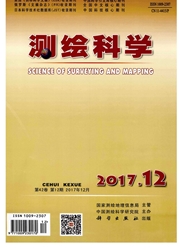

 中文摘要:
中文摘要:
本文介绍了InSAR卫星轨道状态矢量内插方法,基于荷兰Delft大学开发的Doris雷达干涉软件分析了SAR卫星轨道数据误差对基线参数、参考椭球面相位、地形干涉相位和数字高程模型(DEM)精度的影响。以西藏玛尼地区为例,采用ERS1/2卫星数据,利用Doris软件,分别生成了基于欧空局(ESA)粗略轨道数据和荷兰Delft大学精密轨道数据的数字高程模型(DEM),并以SRTM DEM为基准对其精度进行了对比分析。结果表明,基于粗轨数据获取的DEM明显存在系统偏差,而基于精轨数据获取的DEM与SRTM DEM吻合的很好,相对于前者,精度提高5倍。
 英文摘要:
英文摘要:
This paper introduces the satellite orbit state vector interpolation method in InSAR( synthetic aperture radar interferometry), then the effect of SAR orbital data to baseline accuracy, reference ellipsoid phase accuracy and DEM (digital elevation model) accuracy is analyzed based on Doris software. Then an example is tested about Mani area, the DEMs are got based on coarse orbit from European Space Agency(ESA) and precise orbit from Delft university. Comparing to Shuttle Radar Topography Mission(SRTM) DEM, we find that DEM based on coarse orbit has a apparent system deviation to SRTM DEM, and DEM based on precise, orbit is fitted to SRTM DEM very well, the precision is improved 5 times compared to the former.
 同期刊论文项目
同期刊论文项目
 同项目期刊论文
同项目期刊论文
 期刊信息
期刊信息
